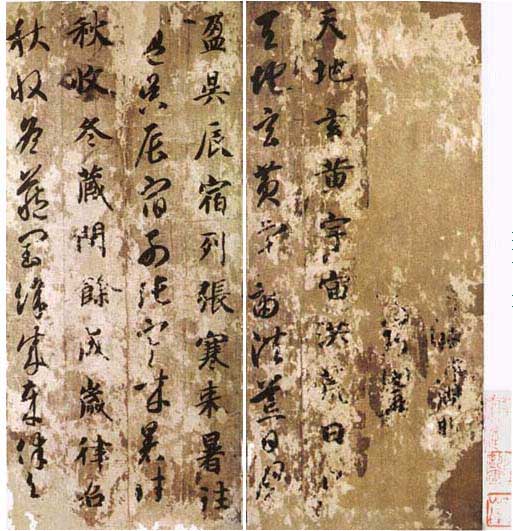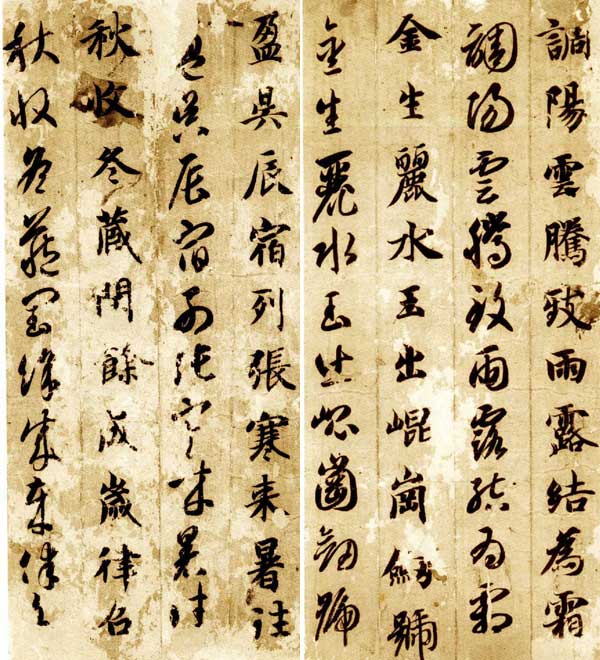

Monk Zhiyong, whose real surname is Wang and named Faji, was born in Kuaiji between the Chen and Sui Dynasties. He is the seventh generation grandson of Wang Xizhi, a great calligrapher of the Jin Dynasty.
He became a monk in his early years, and later traveled to Shanlian Town, Wuxing County, Zhejiang Province, where he lived in Yongxin Temple for thirty years. Here, Zhiyong lived in seclusion, getting up at dawn every day, grinding a large plate of ink, and then copying Wang Xizhi's calligraphy without interruption.
Zhiyong also prepared several large 珺 with a capacity of more than one stone in the house. When he was practicing calligraphy, the tip of his writing became bald, so he took it off and threw it into the 珑. As time went by, ten big knots accumulated on the broken pen. Later, Zhiyong dug a deep pit in the open space in front of the window of Yongxin Temple, buried all the broken pen tips in the soil, and built a tomb, which he called the Tuibi Tomb. This is where the allusion later generations said about "returning a pen and turning it into a tomb" comes from here.
After long-term and unremitting hard practice, Zhiyong's calligraphy finally became outstanding, formed his own style, and became a famous calligrapher in our country. At that time, there were so many people asking him to write letters and inscribe plaques that the wooden threshold of the temple was trampled through and had to be wrapped in iron sheets. Later, this story became an allusion, called Iron Gate.
In his later years, he used the literacy course "Thousand Characters" as the content, and wrote more than a thousand books in both Chinese and cursive scripts. He selected the most satisfactory 800 books and distributed them to various temples in eastern Zhejiang. To this day, Jiyong's "Thousand Characters" ink and engravings are still regarded as a model for learning calligraphy.
Dong Qichang of the Ming Dynasty said in his "Essays on Painting a Zen Room" that he studied Zhong Yao's "Declaration Form", "Every time he uses a pen, he must twist and turn, turn back and forth, and finish calmly. It is said that when he writes, he wants to penetrate the back of the paper." He Shaoji of the Qing Dynasty said in his "Thousand Character Essay": "The pen comes from the air and lives from the air. Even though the house has leaks, it is not enough to describe it." We carefully read his ink "Thousand Character Essay", and we can see that he used the pen to hide the head and protect the tail, with twists and turns, implicit and rhythmic interest. What Dong and He said is accurate, specific and appropriate.








